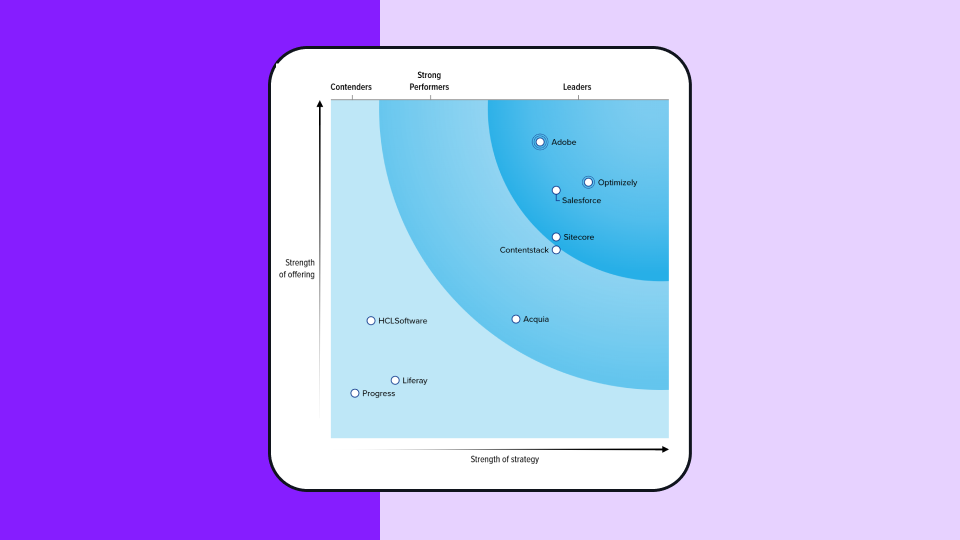Retrieval-Augmented Generation (RAG)
Hva er Retrieval-Augmented Generation (RAG)?
Retrieval-augmented generation (RAG) er en AI-forbedringsmetode som gir språkmodeller tilgang til eksterne kunnskapskilder for å gi mer nøyaktige og pålitelige svar.
Er du lei av at AI finner på svar? Slik løser RAG dette problemet. Tenk på det som å gi AI muligheten til å "slå opp" i organisasjonens kunnskapsbase før du svarer på spørsmål, på samme måte som en menneskelig ekspert kan konsultere referansemateriale før han eller hun gir råd.
RAG er et viktig fremskritt innen generativ AI (Gen AI), og forbedrer hvordan maskinlæringsmodeller håndterer informasjonsinnhenting og naturlig språkbehandling. I motsetning til tradisjonelle chatboter som utelukkende baserer seg på opplæringsdata, kan RAG-aktiverte systemer benytte seg av flere datakilder i sanntid, noe som gjør dem mer praktiske og pålitelige for forretningsapplikasjoner.
RAG fungerer ved å integrere tre viktige elementer:
- Systemer for informasjonsinnhenting som finner relevant innhold
- Naturlig språkbehandling for å forstå konteksten
- genereringsfunksjoner som produserer nøyaktige svar
Kjernekomponenter:
- Vektordatabaser: Pinecone, Weaviate, Milvus
- Innebygde modeller: Store språkmodeller og alternativer med åpen kildekode basert på dine spesifikke behov
- Søkestrategier: Semantisk søk, hybridsøk og kontekstbevisst gjenfinning
Hvorfor RAG er så viktig
Organisasjoner er med rette risikovillige når de implementerer AI-løsninger for å øke automatiseringen, personaliseringen og innholdsskapingen. Til tross for alle fordelene med AI, er det mange måter algoritmen faktisk kan motarbeide deg på: feil eller utdatert informasjon, tonedøvt eller irrelevant innhold, eller innhold som bryter med personvernlovene.
Retrieval-augmented generation (RAG) endret denne dynamikken ved å hjelpe AI til å jobbe mer som de beste medarbeiderne dine gjør, ved å konsultere aktuell dokumentasjon og kundeinformasjon før de gir personlige svar. Dette skiftet har særlig påvirket bransjer der både nøyaktighet og personalisering er avgjørende, for eksempel finanstjenester, helsevesen og detaljhandel.
Hvordan RAG fungerer: Prosessen i tre trinn
RAG-prosessen for gjenfinning og utvidet generering består av tre hovedtrinn:
- Gjenfinning
Når en bruker sender inn et spørsmål, søker den kunstige intelligensen i en vektordatabase for å finne den mest relevante informasjonen fra strukturerte og ustrukturerte datakilder. - Bearbeiding
Den kunstige intelligensen analyserer de innhentede dataene og forstår konteksten og relevansen for å sikre nøyaktig tolkning. - Generering
Ved hjelp av den innhentede kunnskapen genererer den kunstige intelligensen et kontekstuelt nøyaktig svar, samtidig som den opprettholder en konsekvent merkevarestemme og godkjente meldinger.
Eksempel: Et finansselskap som bruker RAG, sørger for at AI-genererte kundesvar alltid er i tråd med gjeldende regelverk og bransjeoppdateringer.
Hvordan RAG hjelper markedsføringsteam
Markedsførere kan utnytte RAG til å automatisere innhold av høy kvalitet og merkevarekonsistent innhold i stor skala, samtidig som de sikrer nøyaktighet. For markedsførere betyr dette at de kan
- Skape persontilpasset innhold - AI skreddersyr meldinger basert på kundesegmenter og preferanser
- Opprettholdemerkevarestemmen - Sikre at alt innhold er i tråd med merkevarens retningslinjer
- Skalerer innhold sproduksjonen - Automatiserer oppretting og optimalisering av blogger, e-post, annonser og sosiale medier, samtidig som kvaliteten bevares
- Bruker godkjente meldinger - forhindrer innhold som ikke er i tråd med merkevaren eller er villedende
Brukstilfeller for markedsføring i den virkelige verden: AI-drevet personalisering
Tenk deg en klesforhandler som bruker en RAG-basert AI-modell for å forbedre personaliseringen:
Kunde A kjøper ofte sportsklær. AI-en:
- Henter produktinformasjon og merkevaregodkjente meldinger
- Genererer personaliserte produktanbefalinger
- Skriver en tilpasset e-postkampanje som reklamerer for nyankomne varer
Resultatet? Høyere kundeengasjement, økt konvertering og en sterkere merkevaretilstedeværelse gjennom AI-drevet personalisering.
Fordelene med RAG: Hvorfor bedrifter tar det i bruk
De største fordelene med Retrieval-Augmented Generation:
- Forbedrer AI-nøyaktigheten - genererer svar ved hjelp av ekte, verifiserte data
- Holder innholdet oppdatert - henter alltid den nyeste informasjonen fra bedriftens kunnskapsbaser
- Forbedrer søk og gjenfinning - gjør statiske svar om til dynamiske ressurser
- Sikrer samsvar - hjelper regulerte bransjer med å opprettholde nøyaktigheten
- Øker personaliseringen - leverer kundespesifikke anbefalinger
Beste praksis for implementering av RAG i AI-systemer
- Optimaliser kunnskapskildene - Organiser og strukturer dataene dine for AI-henting.
- Bruk metadata og tidsstempler - Sørg for at den kunstige intelligensen vet når innholdet sist ble oppdatert
- Finjustere innlemminger - Juster hvordan den kunstige intelligensen matcher søk for å optimalisere nøyaktigheten
- Test og finpuss regelmessig - Forbedre søkestrategiene kontinuerlig basert på tilbakemeldinger fra brukerne
Viktige bruksområder for RAG på tvers av bransjer
Bedrifter i ulike bransjer bruker retrieval0augmented generation for å forbedre automatisering og beslutningstaking , blant annet
- Bedriftssøk - AI-drevne interne kunnskapsassistenter hjelper de ansatte med å finne bedriftsdata umiddelbart
- Kundesupport - Chatbots henter de nyeste vanlige spørsmålene og retningslinjene for å gi nøyaktige svar
- Etterlevelseog dokumentasjon - AI sikrer overholdelse av regelverk ved å henvise til oppdaterte juridiske dokumenter
- Personalisering av netthandel - AI genererer tilpassede produktanbefalinger ved hjelp av kundedata i sanntid
Eksempel: En helseinstitusjon bruker RAG-basert kunstig intelligens for å sikre at pasienthenvendelser alltid gjenspeiler de nyeste medisinske retningslinjene og regelverket.
Hva er det neste for RAG? Fremtiden for AI-drevet innhold
RAG vil fortsette å spille en avgjørende rolle i utviklingen av AI-løsninger for bedrifter.
Det neste store skiftet: AI-agenter drevet av RAG vil automatisere arbeidsflyter innen markedsføring, forbedre kunnskapsinnhentingen i bedriften og forbedre AI-drevet beslutningstaking .
Viktige trender å holde øye med:
- AI for kundeengasjement i sanntid - Chatbots og virtuelle assistenter vil utnytte kunnskapi sanntid
- Avanserte AI-søkesystemer - Bedriftssøk vil bli smartere og raskere
- AI-generert samsvarsovervåking - sikrer at AI-generert innhold alltid overholder bransjereglene
RAG endrer hvordan virksomheter bruker AI til personalisering, automatisering og kunnskapshåndtering - og sørger for at AI-generert innhold alltid er i samsvar med regelverket.
AI-agenter er i ferd med å omforme hvordan markedsføringsteam jobber. Fra å effektivisere innholdsproduksjon til å levere datadrevet innsikt - AI-agenter utstyrt med RAG øker produktiviteten, reduserer repetitive oppgaver og hjelper teamene med å gjennomføre smartere og mer personaliserte kampanjer. Etter hvert som disse funksjonene utvikles, vil de endre måten markedsføringsteamene tilnærmer seg kreativitet, effektivitet og beslutningstaking på.

